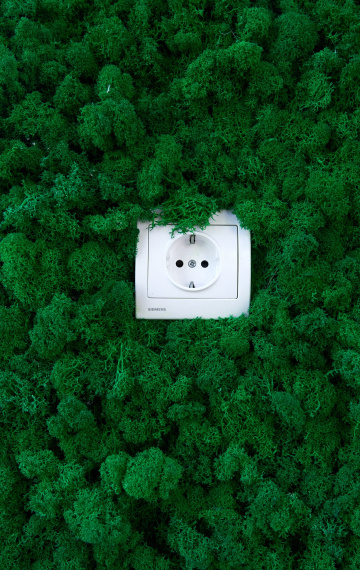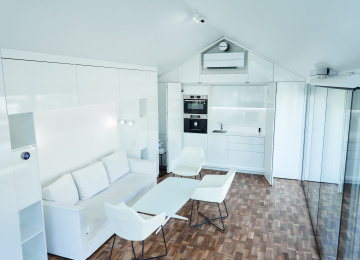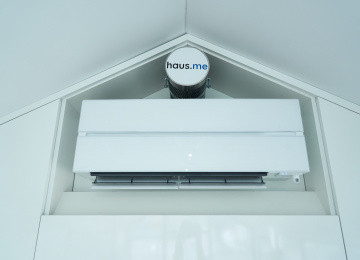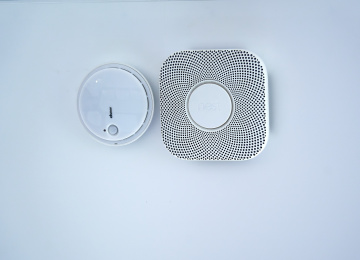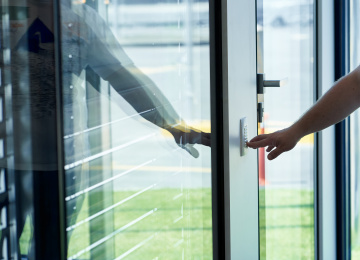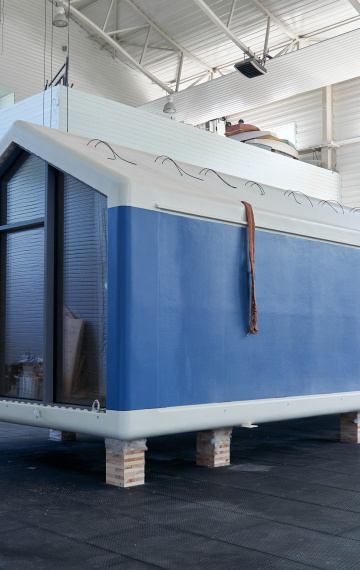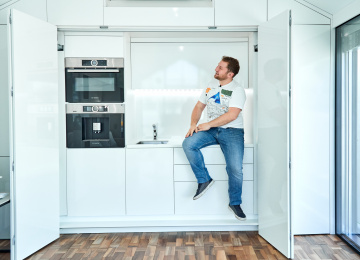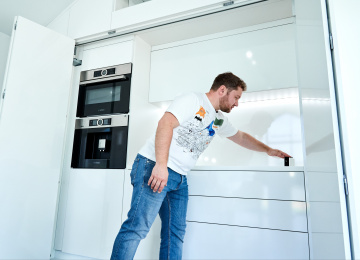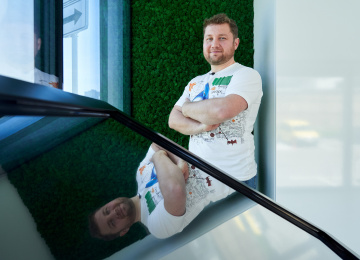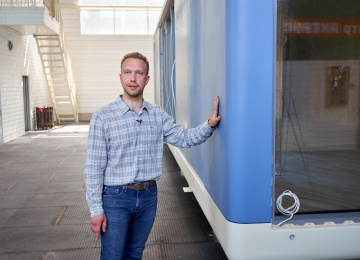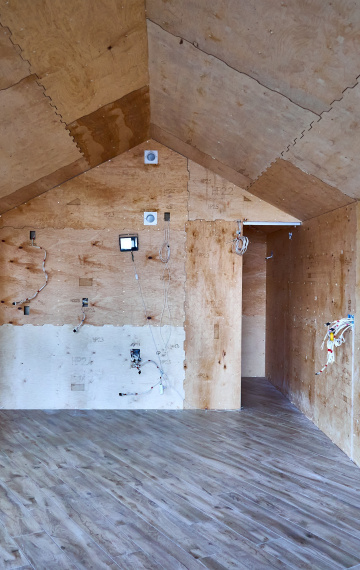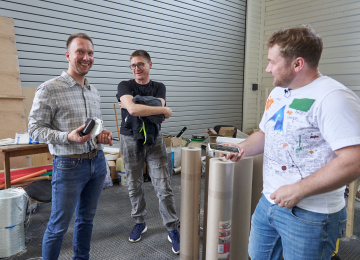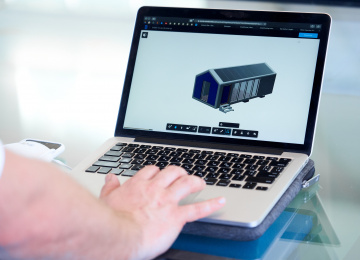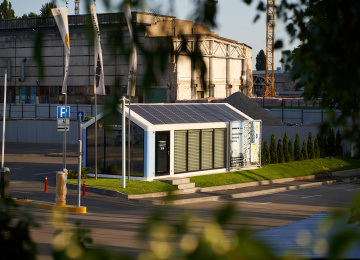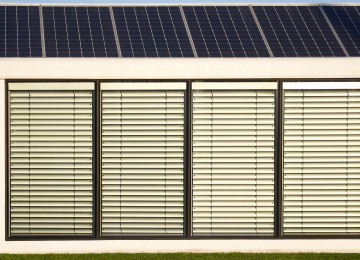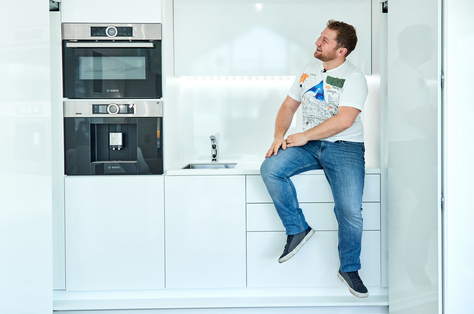
An autonomous house that is easy to assemble in a matter of weeks and can be placed anywhere. A building that is independent from the power grid, has its own sewerage, and is equipped with water and air purification systems. An intelligent home that includes an automation system to control appliances and manage energy distribution. Just a decade ago, this seemed like sci-fi, but now it is a product of the Ukrainian start-up Haus.me, which is developing the latest engineering solutions for autonomous houses.
As science and technology develops, humanity seeks to create more comfortable living conditions. However, we are still dependent on the environment and natural resources. Initially, a house was one of the first inventions to save people from harsh weather conditions, wild animals, and cataclysms, but nowadays environmental deterioration and climate change are forcing the construction industry to adapt. Modern houses should be not only safe and comfortable but also resource efficient and low waste. And such solutions have appeared. The Ukrainian team Haus.me is creating engineering systems that bring people closer to their desired freedom without losing their connection with nature.
Energy efficiency and autonomy: The desire for freedom
Construction is one of the oldest professions of humankind. With the advent of first homes and granaries, humanity gradually separated from the ecosystem and transformed the surrounding landscape to meet their own needs. This process accelerated even more in the 19th century, during the Industrial Revolution. As a result, humanity started to consume more and more energy. Alongside agriculture and industry, a large share of energy consumption is needed for the construction and housing sector.
The use of traditional sources of energy, such as coal, gas, and oil, leads to greenhouse gas emissions, one of the main causes of climate change on the Earth. The International Energy Agency expects energy consumption to double by 2030 and calls for new energy-efficient solutions, including in the construction industry.
Architects and innovators started developing energy efficient design approaches and standards in the 1960s to 1970s, when the political crisis of the Middle East turned into an oil embargo followed by the energy crisis. To achieve the energy efficiency of a building means to reduce the level of specific energy consumption (kWh/m2) without compromising the comfort of the internal environment. In terms of energy efficiency, houses are divided into several subtypes depending on their energy performance, starting from old houses that consume about 300 kWh/m2 per year to so-called energy-plus-houses that produce more energy than they consume. So-called passive houses fall into the same category, as they consume just up to 15 kWh/m2 per year.
The first steps towards reducing energy costs were the installation of the triple-glazed windows, and passive use of solar energy. These technologies and the ones developed in the next decade (such as new systems of air ventilation and filtration, window technologies, and building materials) became the basis of one of the approaches to energy efficiency — passive design.
The concept of the passive house originated in 1988, and the first standards of passive buildings were set in 1995 by Passive House Institute in Darmstadt, Germany. Those standards were updated in 2015. They are considered to be the most demanding standards in construction. Of the 60,000 passive houses that existed worldwide by 2016 (which were superinsulated houses effectively using solar energy), only 14,000 managed to meet all the criteria to become certified by the Passive House Institute.
Nowadays, many countries recognise the need for energy-efficient strategies in construction. However, the passive design trend remains niche and continues to be developed only in countries where its principles and first prototypes were developed. Germany, Canada, the United States, Sweden, and Switzerland are among those countries.
Ukrainian companies offer their own products on the market of energy-efficient materials (for example, hemp shives used by Hempire), solutions for smart homes, which help to optimise heating, and so on. A few companies specialise in building passive houses. One of them is Haus.me, which has created its own autonomous smart house.
After analysing the needs of consumers in Europe, the team of the Ukrainian start-up Haus.me, headed by its founder Maksym Herbut, aimed at creating a project of a house that would not only be saving energy but also could be autonomous from public energy and water supply grids.
From windows to engineering systems
Maksym Herbut studied at the Energy Faculty of Pryazovskyi State Technical University. He gained his first job experience at a metallurgical plant, where he worked with automated production systems. After the economic crisis of 1998, he and his partners started a number of projects in the construction industry. In particular, they set up the production of energy-efficient windows. According to Maksym, this is when the new “daily routine” began for his team, which 17 years later resulted in creating a high-tech start-up that develops engineering systems for autonomous passive houses.
Maksym says his work in manufacturing gave the impetus to his entrepreneurial career because it taught him discipline and professional ethics. The first tasks related to power supply systems were requested by Maksym’s former clients. This is how a deeper immersion into the engineering dimension of a construction process started. At first, Maksym and his fellow engineers were buying modern equipment and researching innovative technologies they discovered at international tradeshows and conferences. Then they started to apply the acquired knowledge: they created a new company that was designing houses and engineering systems equipped with the latest technology, such as solar panels, collectors, heat pumps, and so on.
Back in 2014, Haus.me engineers realised that their ideas were far ahead of Ukraine’s pace in energy-efficient construction. So they dared to win over the German market (which was complex, saturated, and accustomed to innovations) with their technology of making autonomous houses.
Created under the name PassivDom, the Ukrainian company decided to create another brand for foreign markets and in the autumn of 2019 changed its name to Haus.me. For the Ukrainian market, the original brand is still in use.
Haus.me home: Modular, autonomous, and mobile
Maksym recalls that the creation of the company’s houses started from marketing research. The team collected search requests of German users on the internet about the functions, characteristics, and features of the technologies people were interested in for their homes. Then the team compiled those requests with their own ideas and know-how accumulated over the years of their collective work. In 2016 the Haus.me team completed a prototype of the house.
— When I showed our work and calculations to Professor Wolfgang Feist (the founder of the passive house conception — ed.) in the Passive House Institute in Darmstadt, we were told that it would never work out, no one would ever need it, so it had no sense at all. Then we realised that we had to work on it.
The designing stage lasted four years. During this time Haus.me developed three models of houses (for two people, for a family with one child, and for a family with two children) and constructed a few experimental houses, one of them in Ukraine. In 2018, the Haus.me team began to cooperate with NGO Greencubator and received a grant after winning the Climate Innovation Vouchers competition. This is a joint initiative of Greencubator and the European Bank for Reconstruction and Development (EBRD) and is a part of the Finance and Technology Transfer Centre for Climate Change (EBRD FINTECC) programme funded by the European Union.
According to Maksym, the implementation of such an ambitious product with a team of only 10 engineers was made possible thanks to an unconventional approach to problem solving. Haus.me engineers combined the advantages of modular prefab construction, integrated existing passive technology, and developed their own systems and materials. As a result, they managed to create a simple-to-use, reliable, and energy autonomous house.
— At present, there is only one mobile, fully autonomous house in the whole world that functions in any climate and under any circumstances. And this is our project.
Indeed, a Haus.me house is independent from the electrical grid. This is the first house that can fully function using exclusively solar energy, even in winter. When the temperature is -20ºC, the house consumes only 860 Wh, which is about 6.5% of the capacity of the solar panels on its rooftop. During cloudy days, the solar batteries run at a quarter of their full power capacity, thus the house consumes the energy stored in its lithium iron phosphate batteries (LFP batteries — ed.). Maksym explains that such efficiency is possible due to superinsulated walls and windows of the house and also thanks to the software that distributes the energy properly between all the systems. It allows the house to consume less than 1 kWh per hour, which is four times less than what a certificated passive house consumes.
Superinsulated and secure
The composite material used for the house construction is as strong as steel, but it’s so much lighter, so it bends and does not break. The developers explain that this material is so reliable and resistant to ultraviolet radiation, rain, frost, and usual wear and tear that the company provides a lifetime warranty. On average, Haus.me provides a warranty for up to 15 years for the separate blocks of a house — in the case of a problem, those can be replaced. The frame is assembled like a fuselage of an airplane and sheathed like a composite yacht. The walls of the house are covered with fibreglass. There are few composite layers inside, so the thermal conductivity of this 25-cm-wide wall is almost the same as of a 9-m-wide brick wall. With this much insulation, the house can withstand winds, floods, and extreme temperatures easily. Maksym jokes that if you keep the doors shut, the house can float in the middle of a lake.
The technology of window production is one of the key aspects of the uniqueness and effectiveness of the house’s construction:
— The main difference of our house is that it has the warmest windows in the world. Nobody uses this technology we created and patented — those wide, warm, and energy-efficient windows.
Maksym explains that most of the energy-efficient houses in the United States and Europe have the minimal window size because it is rather complicated to produce the energy-saving glass. Nevertheless, Haus.me engineers have invented the frameless method of glassmaking, which allows the creation of glass surfaces with the same properties as insulated walls of a house. One 250-mm-thick window is a completely isolated system, consisting of six tempered glasses that absorb infrared radiation and preserve it like a solar collector. It is possible to install windows with additional features such as electrochromic glass tint that switches from transparent to opaque depending on the electrical voltage applied — this very technology is used in Boeing Dreamliner airplanes.
Self-sustained and ergonomic
The house created by Haus.me has a central computer that accumulates data from the engineering systems of the entire building. All systems and functions can be controlled by voice or using an app. By pressing a single button, you can dim a window or close the blinds, for example. But this is just a small part of the system’s features:
— The house can locally adjust settings according to the surrounding environment or individual preferences of the owner.
The founder of Haus.me explains that the house sensors collect data about the status of its systems and devices, data about the water and air quality, and the activity of its residents in real time. Then this information is processed by a local server that manages all the systems in the house and distributes the energy between them. For instance, if the house “detects” a party, it can set the lights brighter or dim them if it’s bedtime. Several sensors in the house collect data about the inhabitants’ usage patterns for lighting, and the sensors will automatically adjust the light intensity according to those patterns.
The ventilation is regulated according to the number of people on the premises and their current activity. The house is equipped with a recuperative ventilation system: the used air partially warms up the cold fresh air coming from outside. According to Maksym, it allows saving up to 95% of the energy compared to traditional systems on the market. This makes the house’s losses of energy for ventilation 20 to 30 times less than for ordinary houses.
New HEPA- and UV-filters protect premises from fungus, bacteria and most viruses. HEPA-filters detains any particles from 0.3 to 10 micrometres (which is several hundred times smaller than a human hair). The air is also purified from allergens such as pet hair, pollen, and so on.
The software allows the optimal utilisation of water, which can be supplied from any source, even from a puddle. The system uses reverse osmosis to supply the house with drinking water. Additionally, there is an option to generate water from condensation in the air. Sewerage is fully autonomous but can also be connected to external networks.
A water recirculation system saves up to 80% of the hot water in a shower, not to mention the energy savings from its heating. Sensors installed in a drainage system constantly measure the quality of water. If it is considered clean, then the water is run through a filtration system, get heated and pumped up to be reused.
A microclimate system is also autonomous and automated. The house analyses climatic conditions and preferences of its residents then decides whether the heating should be switched on or off. The heat inside the premises is provided by a heat pump, which generates five times more thermal energy than the amount of the electric energy it uses. To reach the optimal balance in heating the house’s systems factor in thermal energy that is produced by people and home appliances and could be reused. The Haus.me team reassures that the air exhaled by five to six people is enough for their system to keep the entire house warm when it’s -20°C outside. The savings from heating the premises and water in this way are up to 80% compared to using an electric or other type of boiler.
Light and zero waste
The smart house from Haus.me saves not only energy but also time and resources. It is created with the use of the SKD assembly approach, just like cars. Some elements are 3D printed, while other components are made by partners. Thereby there is no construction waste during the production and installation processes. The simplicity of assembling the house can be compared to assembling Ikea furniture or Lego construction sets. Maksym says the company’s production partners receive containers with all the parts, which have marks and holes for fixtures on them, and the assembly guide. The whole set can be put together in three to four weeks by a small team.
— The only tools you need to build this house are a screwdriver and a wrench.
The house comes fully furnished and equipped with basic household appliances that are the most energy efficient (class A++). But this model is just a demonstration. A primary activity of Haus.me is the development of engineering systems, materials, and construction methods for autonomous houses.
Haus.me clients are development companies that want to modernise their real estate products. However, not all of them are willing to take risks, raise capital, hire new experts, or coordinate legal issues. And so, Maksym explains, Haus.me significantly simplifies these procedures: the company’s client receives a container with all the parts and assembly instructions along with certificates for each of the technology and engineering systems used. All that remains is to assemble the house and deliver it to the end customer.
Autonomous modular passive houses from Haus.me provide owners with the freedom of movement and an opportunity to live anywhere, as the houses don’t need any foundation or connection to any network, independently produce heat and water, adjust the temperature, and detect potential problems. They are hurricane and earthquake resistant and, as their designers joke, can protect you even during a zombie apocalypse.
— We give people the feeling of freedom from any worries, problems, or calculations. Thus, the best description for our houses will be “the house of your dreams”.

